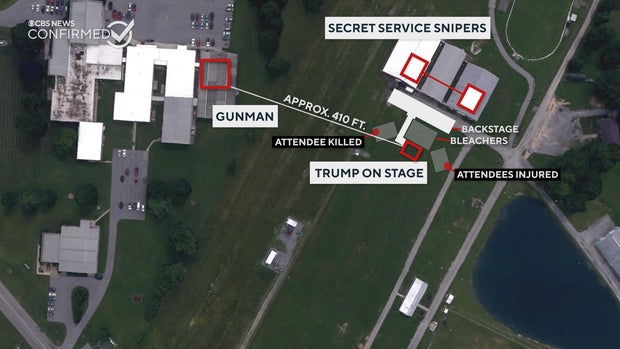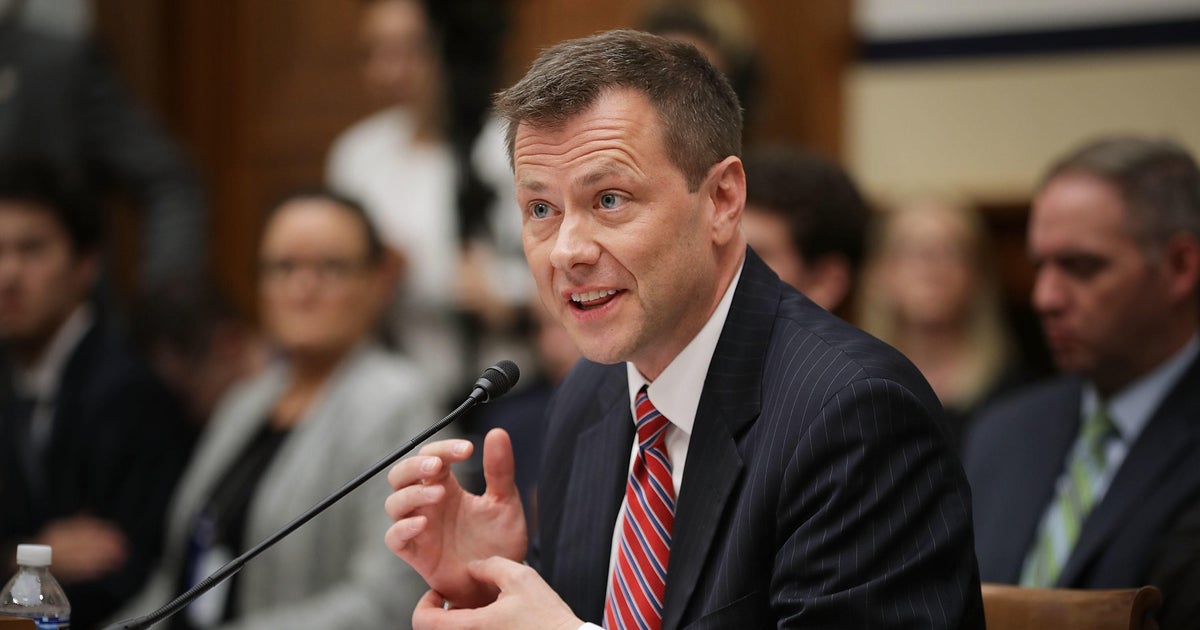FBI says Trump agreed to victim interview about assassination attempt
Washington — Former President Donald Trump has agreed to speak with the FBI for what the bureau described as a "standard victim interview" to discuss the attempted assassination against him at his Pennsylvania rally earlier this month, an FBI official said in a call with reporters Monday.
Kevin Rojek, the special agent in charge of the FBI's Pittsburgh field office, told reporters that the bureau reached out to Trump and he agreed to the interview. It is unclear when it will take place.
"We want to get his perspective on what he observed," he said. "It is a standard victim interview."
The FBI has been investigating the shooting at a Trump campaign rally in Butler, Pennsylvania, on July 13, and has conducted 450 interviews. As part of its efforts to identify the motive of the gunman, 20-year-old Thomas Matthew Crooks, the bureau is seeking information from 86 companies, including gaming and social media platforms, and messaging apps, Rojek said.
Crooks opened fire on the crowd using an AR-style rifle, injuring Trump and two others and killing one attendee. He was killed by a Secret Service sniper, and federal authorities continue to investigate the shooter and his actions in the lead-up to the attack. The FBI has not yet found a motive and believes Crooks acted alone, without any accomplices or co-conspirators, officials reiterated Monday.
FBI Director Chris Wray told lawmakers last week that though there is not yet a "clear picture" of the gunman's motive, investigators believe he became focused on Trump and the rally in Butler around July 6. The FBI analyzed a laptop tied to Crooks and found he conducted a Google search for "how far away was Oswald from Kennedy," a reference to Lee Harvey Oswald, who assassinated President John F. Kennedy in 1963. The day that internet search was conducted, July 6, was the same day Crooks registered to attend Trump's rally, Wray said.
Agents also recovered a total of three "relatively crude" explosive devices, Wray said. Two were in Crooks' vehicle and one was at his residence. The FBI chief told the House Judiciary Committee that the gunman had a transmitter that would've allowed him to detonate the explosives in his car remotely, but the receivers on the bombs were turned off.
The FBI told reporters that in addition to the search about Kennedy's assassination, Crooks also searched for information about power plants, improvised explosive devices, mass shootings and the assassination attempt against the prime minister of Slovakia in May.
New details about the Trump shooting
Rojek laid out the timeline of Crooks' actions in months and days leading up to the assassination attempt. He said that in the first half of 2024, the gunman made six online purchases of precursor chemicals, which can be used to make homemade explosives. On July 11, two days before the rally, Crooks traveled to the event site in Butler and spent roughly 20 minutes on "early surveillance" of the area, Rojek said. He then visited a local gun range on July 12 and practiced with what the FBI believes was the same firearm used in the attack.
On July 13, the day of the assassination attempt, Crooks bought 50 rounds of ammunition and traveled to the rally site hours before the event began, Rojek said. The gunman spent more than an hour in the area before returning to his home, where he got his rifle and told his parents he was going to the gun range.
Once Crooks arrived back at the rally site around 3:45 p.m., he flew a drone roughly 200 yards away for 11 minutes, which Wray told lawmakers last week and was reiterated by Rojek. Local law enforcement identified Crooks as a suspicious person just before 5 p.m., and an officer took a photo of him, the FBI said. About 30 minutes later, police saw him using a rangefinder and browsing news sites, according to Rojek.
The gunman was then seen wearing a backpack and walking near the building he would shoot from a few minutes before 6 p.m. Investigators believe Crooks used the building's HVAC system and piping to get on the roof, and the FBI said his rifle had a collapsible stock.
Police dashcam video from 6:08 p.m. showed Crooks on the roof heading in the direction of the spot where he would fire eight rounds, Rojek said. Local police encountered the shooter at 6:11 p.m., according to the FBI, when a officer was boosted onto the roof. Crooks pointed his gun at the officer, who then dropped to the ground, Rojek told reporters. Seconds later, the shooter opened fire on the rally crowd and then was killed.
The assassination attempt sent shockwaves across the nation and raised questions as to how Crooks was able to get onto the roof so close to where Trump was speaking. It led to considerable scrutiny of the Secret Service, and Director Kimberly Cheatle resigned last week.
In addition to the FBI's investigation, the Department of Homeland Security's internal watchdog is examining what happened, and an independent review is also taking place. The House last week unanimously voted to create a bipartisan task force to probe the attack, and a number congressional committees are conducting their own investigations.
Top federal law enforcement officials have already headed to Capitol Hill to brief lawmakers, and Wray and Cheatle both testified publicly before two separate committees last week. The Senate Homeland Security and Governmental Affairs Committee is set to hear from acting Secret Service Director Ronald Rowe and FBI Deputy Director Paul Abbate on Tuesday.




